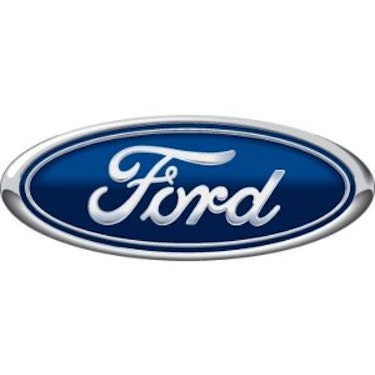Last year, I outlined the investment thesis for Ford Motor Company (NYSE:F), and made the case that its lineup of new vehicles would propel the company and the stock to new heights. As noted in the chart below, Ford has delivered by strongly outperforming both its peer group and the S&P 500:
F Total Return Price data by YCharts
After almost doubling in value, many investors may wonder whether Ford Motor Company (NYSE:F)’s stock has become overpriced in recent months on the way to a new 52-week high last week. A quick look at the company’s valuation will make it clear that there is still room for the stock to appreciate from the current price near $17 per share.
A quick look at valuation
Ford trades at a very reasonable valuation, both compared to its fellow automakers as well as the broader market.
| F | GM | TM | HMC | |
|---|---|---|---|---|
| CAPS rating (out of five stars) | 4 stars | 2 stars | 3 stars | 5 stars |
| Price | $17.11 | $36.40 | $129.69 | $38.42 |
| Market capitalization (in billions) | $67.3 | $50.0 | $205.4 | $71.0 |
| Dividend yield | 2.4% | 0.0% | 1.1% | 2.2% |
| TTM revenue (in billions) | $137.6 | $151.4 | $280.4 | $125.5 |
| TTM price to sales ratio | 0.5 | 0.3 | 0.7 | 0.6 |
| TTM price to earnings ratio | 11.6 | 12.5 | 16.8 | 14.8 |
| Forward price to earnings ratio | 10.2 | 8.3 | 11.7 | 12.9 |
| Source: Motley Fool CAPS and Yahoo! Finance – 7/13/13 | ||||
Looking at trailing sales, Ford Motor Company (NYSE:F) is trading at a cheaper valuation than all of its peers except General Motors Company (NYSE:GM); GM has had a well publicized plunge into bankruptcy, so there is certainly added risk (and opportunity) in any investment in the company until it can demonstrate a consistent history of performance. General Motors Company (NYSE:GM)’s seemingly attractive forward P/E of just 8 and PEG of 0.7 are strong indicators that the analyst community hasn’t completely bought into the General Motors Company (NYSE:GM) recovery story quite yet.

None of the stocks in the peer group noted above are trading at lofty valuations. Toyota Motor and Honda Motor Co Ltd (ADR) (NYSE:HMC) are both trading at forward P/E ratios of less than 13. From a dividend perspective, both companies are similar to Ford in their ability to further increase dividend payments; Toyota’s payout ratio is just 11%, while Honda Motor Co Ltd (ADR) (NYSE:HMC)’s is only 31%. As a whole, this peer group is poised to provide a solid mix of earnings growth and dividends to shareholders over the next several years.
Strong growth opportunities
A year ago, the investment thesis in Ford Motor Company (NYSE:F) was based on a long-term view that the company is positioning itself for tremendous growth. Nothing has changed since then. Thanks to a new lineup of vehicles that have been well-received by the market, Ford is poised for further success.
North America
The key to Ford’s recent surge has been its strong performance in North America. The most recent auto sales data shows Ford’s market share in the United States increasing to 16.7% from 16.1% a year ago. Thus far in 2013, Ford’s domestic sales have increased 13%, which outpaces the 8% gain reported by GM and 6% gains by Toyota and Honda Motor Co Ltd (ADR) (NYSE:HMC). This strength has come from a number of vehicles, including increased sales of 22% for F-series pickups, 23% for Escape, and 18% for Fusion.
Europe
Europe has been a well-publicized problem area for Ford in recent years, headlined by an anticipated $2 billion loss in the region in 2013. With years of economic turmoil forcing Ford to reduce capacity, all signs indicate that the problems have reached bottom and that stabilization is underway.
Last week, Ford announced June sales in Europe that increased 6% over the prior year; while 6% may not seem that impressive, the overall market’s sales declined 7%. As a result, Ford Motor Company (NYSE:F)’s market share in the region increased by a full percentage point to 8%.
A return to profitability in this region would obviously have a huge impact on Ford’s earnings in the future.
China
To position itself for a portion of the huge growth opportunity in China, Ford is investing heavily in new production facilities, including the recent $500 million engine production facility in Chongqing. In total, Ford has spent over $5 billion since 2006 to boost production in this region. While some of this capacity expansion is not fully operational, Ford is still reporting strong growth in China, headlined by a 44% increase in sales during the first half of 2013.
A hidden benefit from rising interest rates
Most investors think that rising interest rates are exclusively bad news for companies like Ford. Rate increases result in higher interest payments on variable-rate debt and future fixed-rate debt issuances, and a company that relies on customer financing for the completion of sales is subject to pressure from rising rates.


